Rhubarb powder is made from pieces of rhubarb that have been dehydrated and then ground finely.
You can use it as an ingredient in rubs or spice mixtures, or as you would a flavouring powder in baked goods, etc. It adds tart notes.
See also: Drying rhubarb
Yields and Equivalents
1.75 kg (4 lbs) rhubarb as purchased (no leaves, but untrimmed) = 1.5 kg (3.3 lbs) rhubarb, fresh, trimmed = 12 cup fresh, trimmed & chopped into 2 cm (1 inch) pieces = 2 ¾ cups dried pieces = 120 g (4 oz) dried pieces = 20 tablespoons powder
5 tablespoons rhubarb powder = approx. 30 g (1 oz)
Directions
See drying rhubarb for directions for the initial drying. Dry a bit longer to ensure the pieces are crisp.
You may wish to cut the rhubarb 50% smaller than the drying rhubarb directions call for, to ensure more even and thorough drying.
Dry the rhubarb past the leathery stage; dry it until it is crisp.
When dried and cooled, store dried rhubarb pieces for a few days in a sealed container to ensure there will be no condensation starting. If there is, dehydrate a bit more, as that excess moisture would affect your powder.
When are you sure that your rhubarb pieces are safely dried, you can grind them into powder. If the pieces are not crisp, you won’t be able to powder them down: you’ll need to return them to the dehydrator for another hour or two.
It’s ideal if you can grind in two steps:
- Put rhubarb pieces in food processor and grind to a coarse powder;
- Take that coarse powder, and in small batches, process through an electric coffee bean mill to reduce to a fine powder.
The reason is that the food processor won’t get it to a fine powder, yet, the larger pieces can be too large for the electric mill to handle. You may devise another one-step phase to get it to a fine powder. (It will never get to the fine consistency of a fine-wheaten flour.)
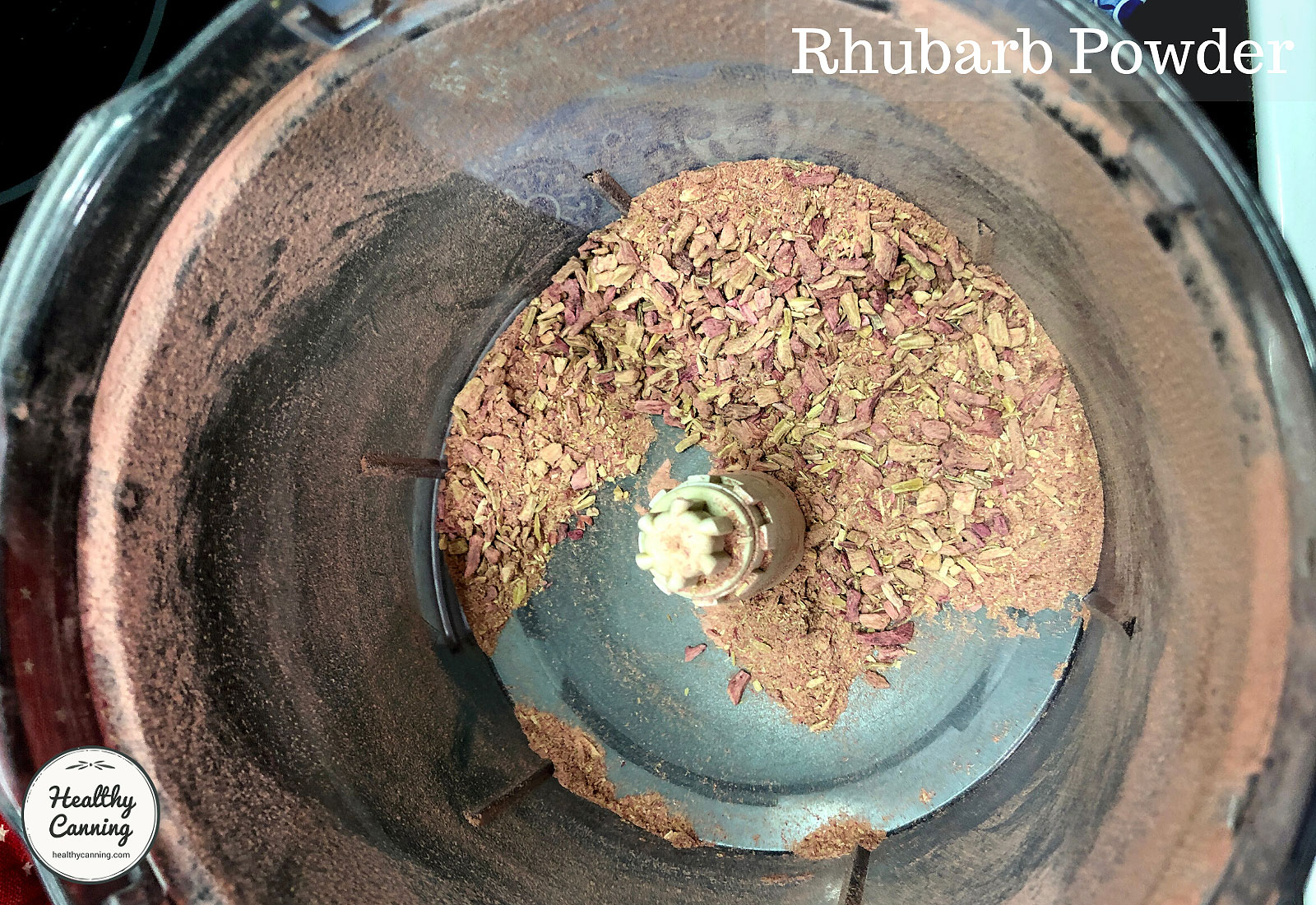
Step 1: Rhubarb pieces in food processor
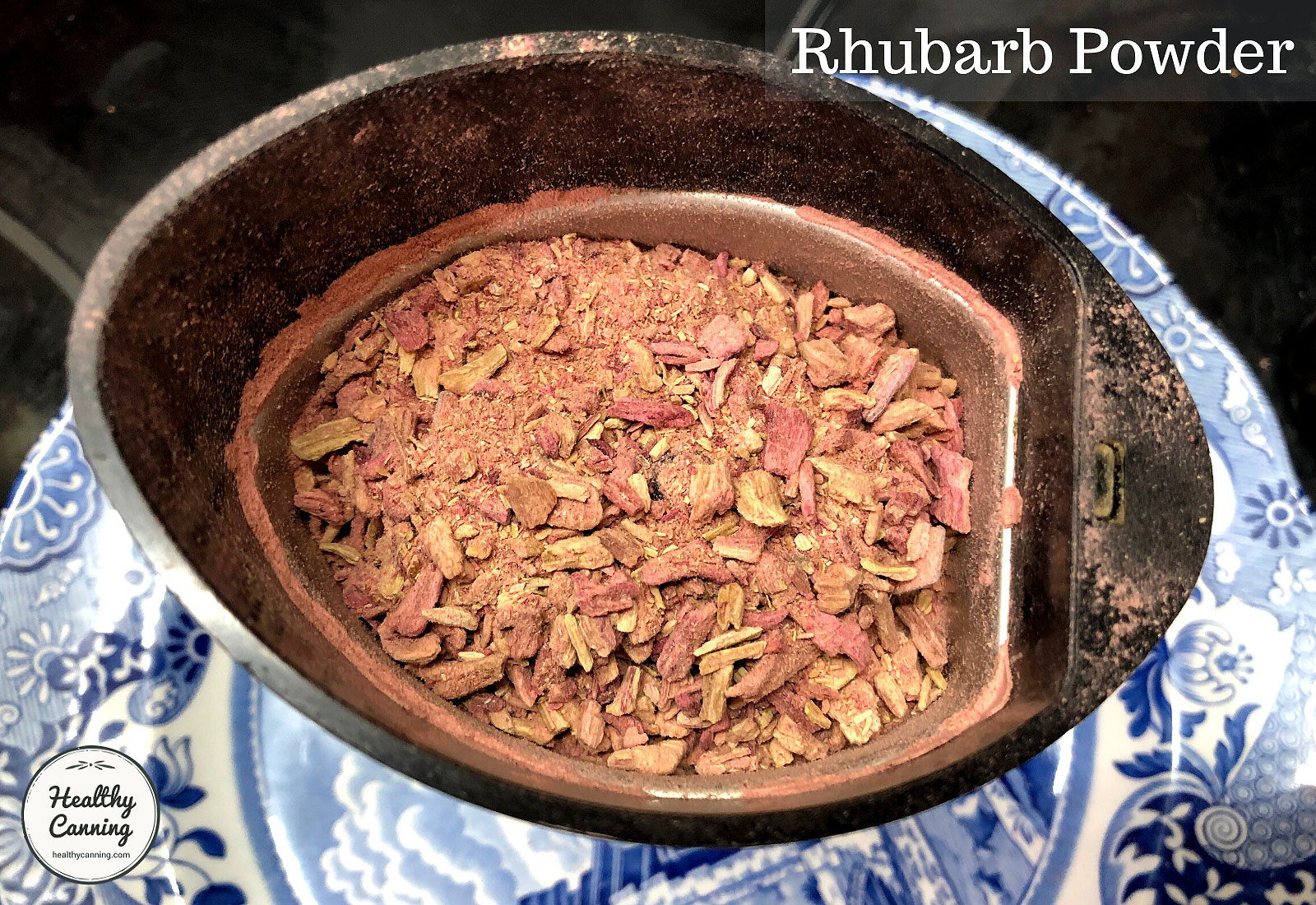
Step 2: Second stage of grinding to reach a fine powder (pictured before second grinding)
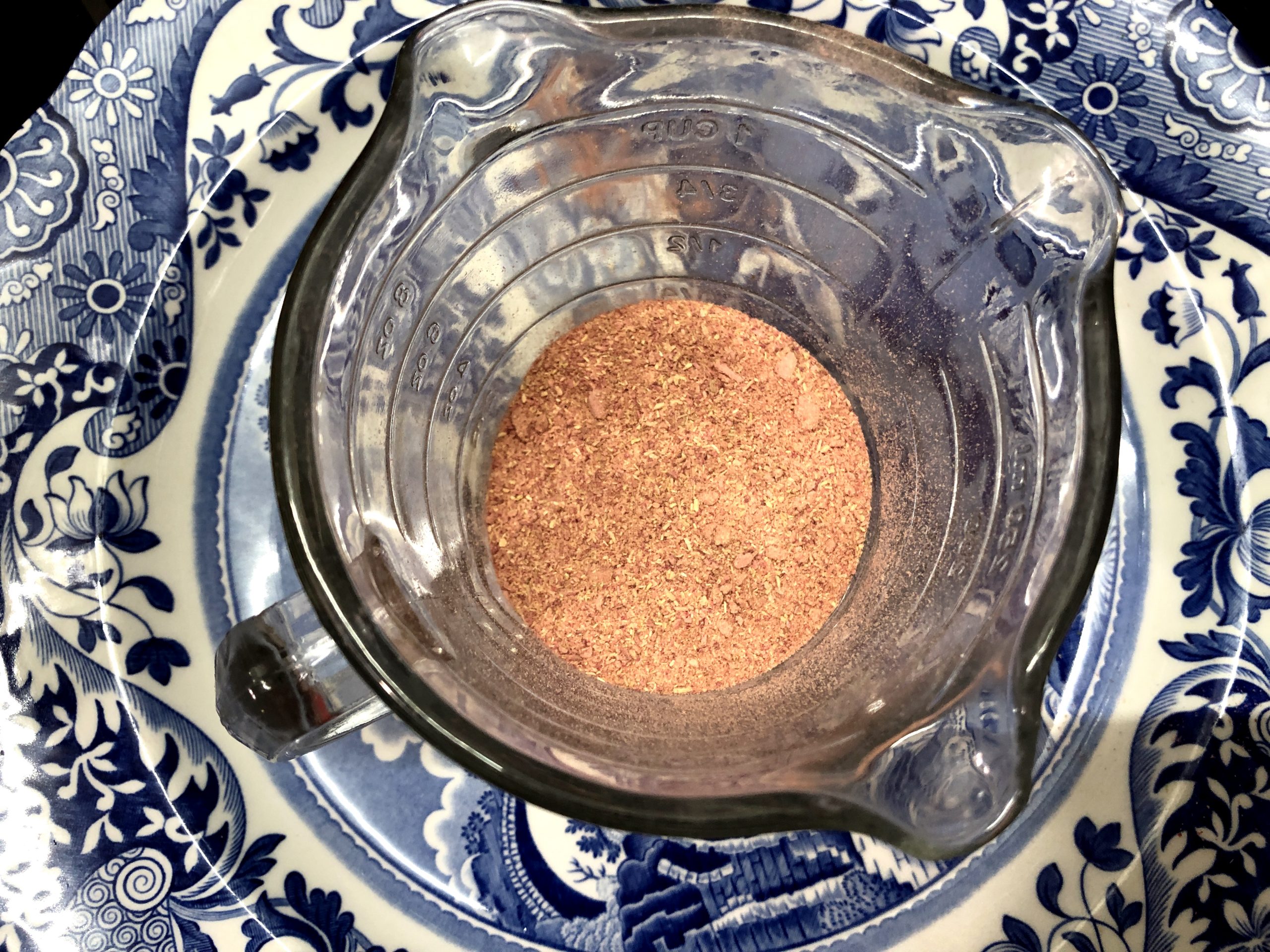
Rhubarb powder after second grinding in coffee grinder
Storage
Store in an air-tight jar. Label jar with name of product and date. Store away from heat and direct light.
Usage notes
No need to rehydrate first when using.
Add rhubarb powder to spice mixes, dry rub mixes, to baking, etc.
Add about a teaspoon of rhubarb powder to 1 cup (250 ml / 8 oz) of vegetable juice or smoothie for a zap of tartness, or stir into yoghurt.
Give your cocktails some pucker power by rimming the edges of cocktail glasses with rhubarb powder.

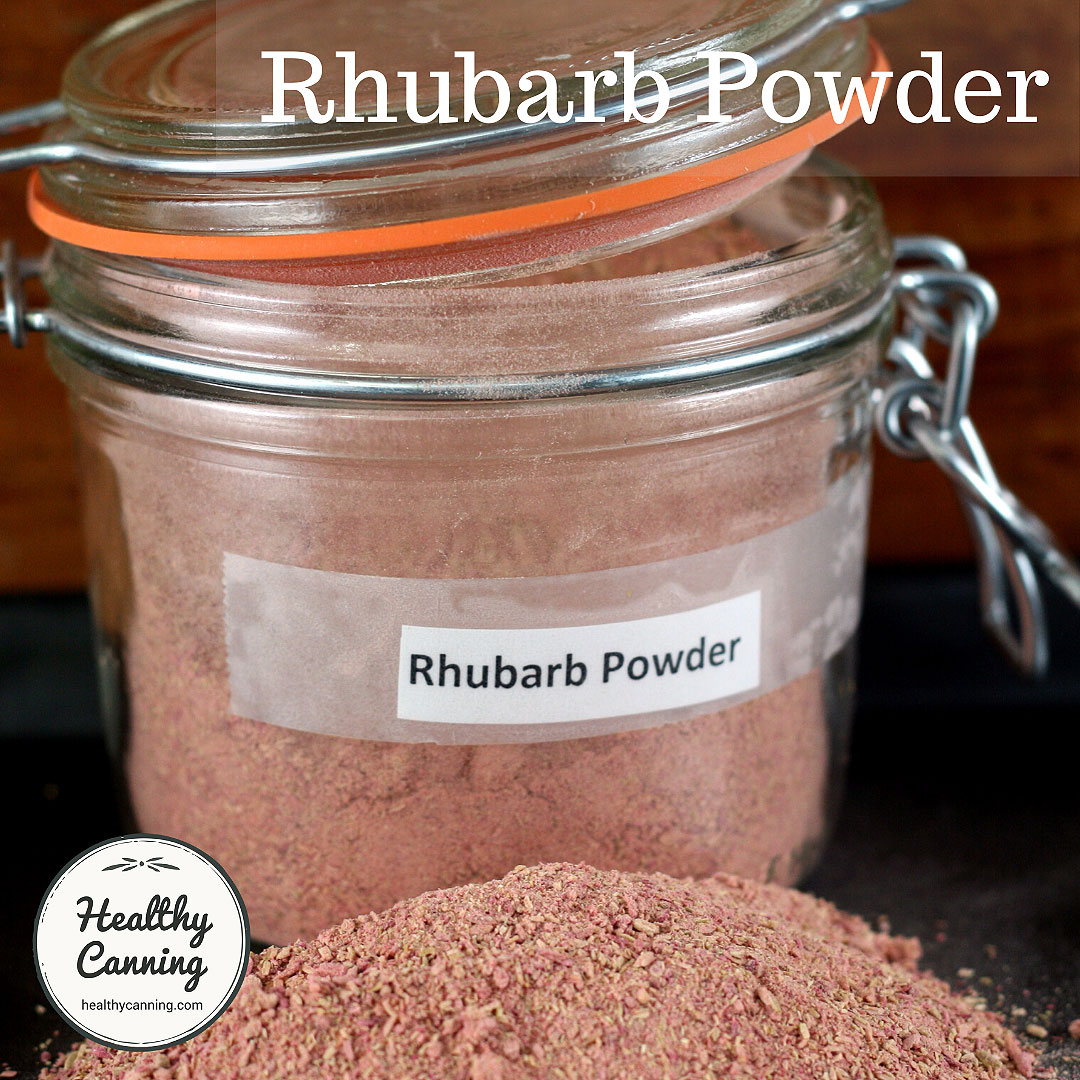
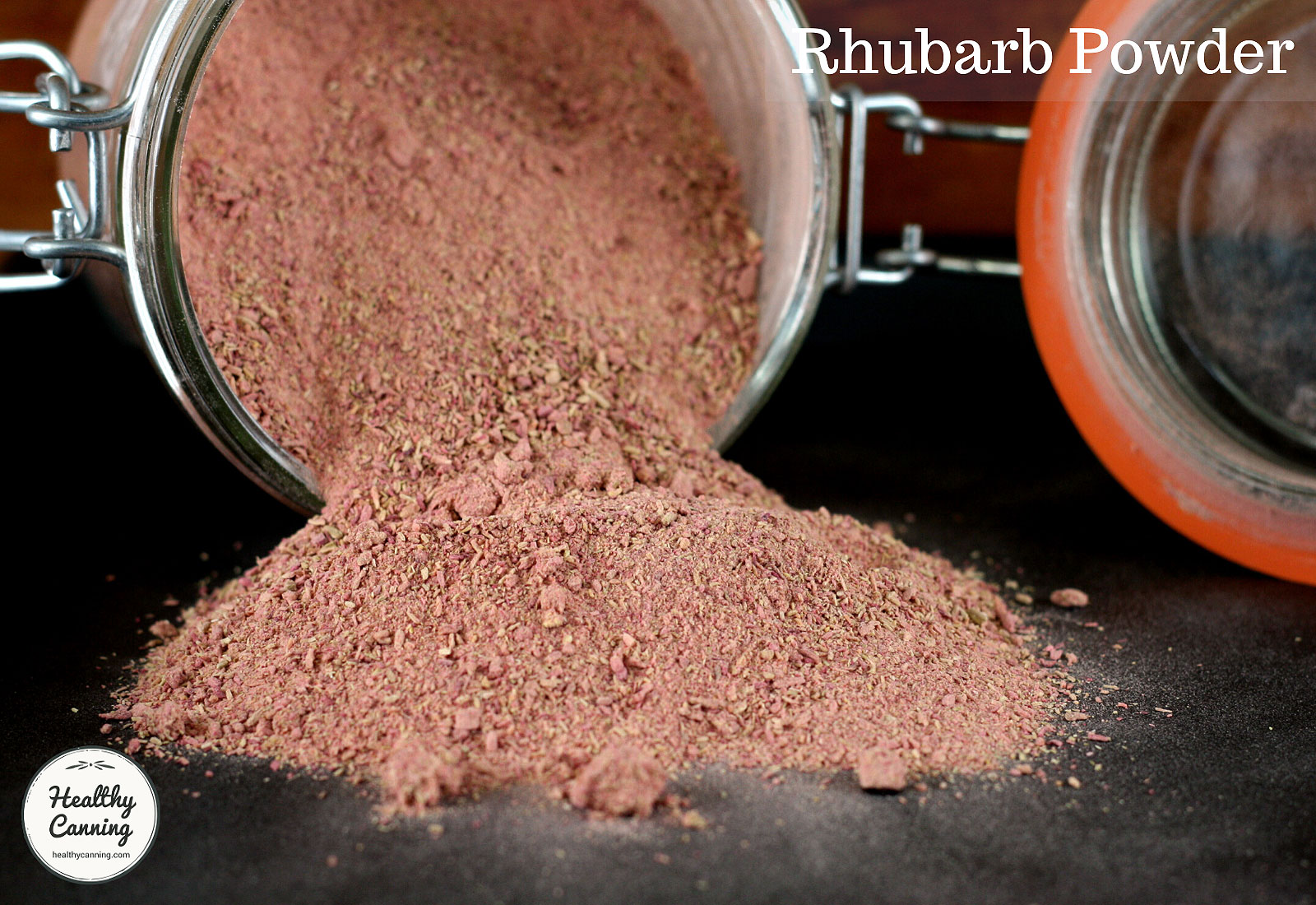
RJ
+Can we put the fresh rhubarb that we have in the freezer directly in the dehydrator? Should they be thawed out first?
Healthy Canning
Oh that’s a toughy. If you thaw it first, you are going to end up with something the consistency of stewed rhubarb which would be impossible to put on mesh drying trays. If you put it frozen on the mesh drying trays, as the rhubarb thaws will all the juice from it just flood the bottom of the dehydrator? Best to contact a Master Food Preserver group and ask someone there if they’ve got any experience with this scenario. https://www.healthycanning.com/master-food-preserver-help-groups
Tony Furlong
Hi healthy Canning people
Just a quick thank you, what a great resource you website is
I have learnt so much, especially about vinegar
Many Thanks
Tony Furlong UK
Elaine Jessup
Can you put the dried rhubarb in the freezer or is that not necessary?
Thank you
Healthy Canning
It is not necessary. It is shelf-stable for many, many, many years.